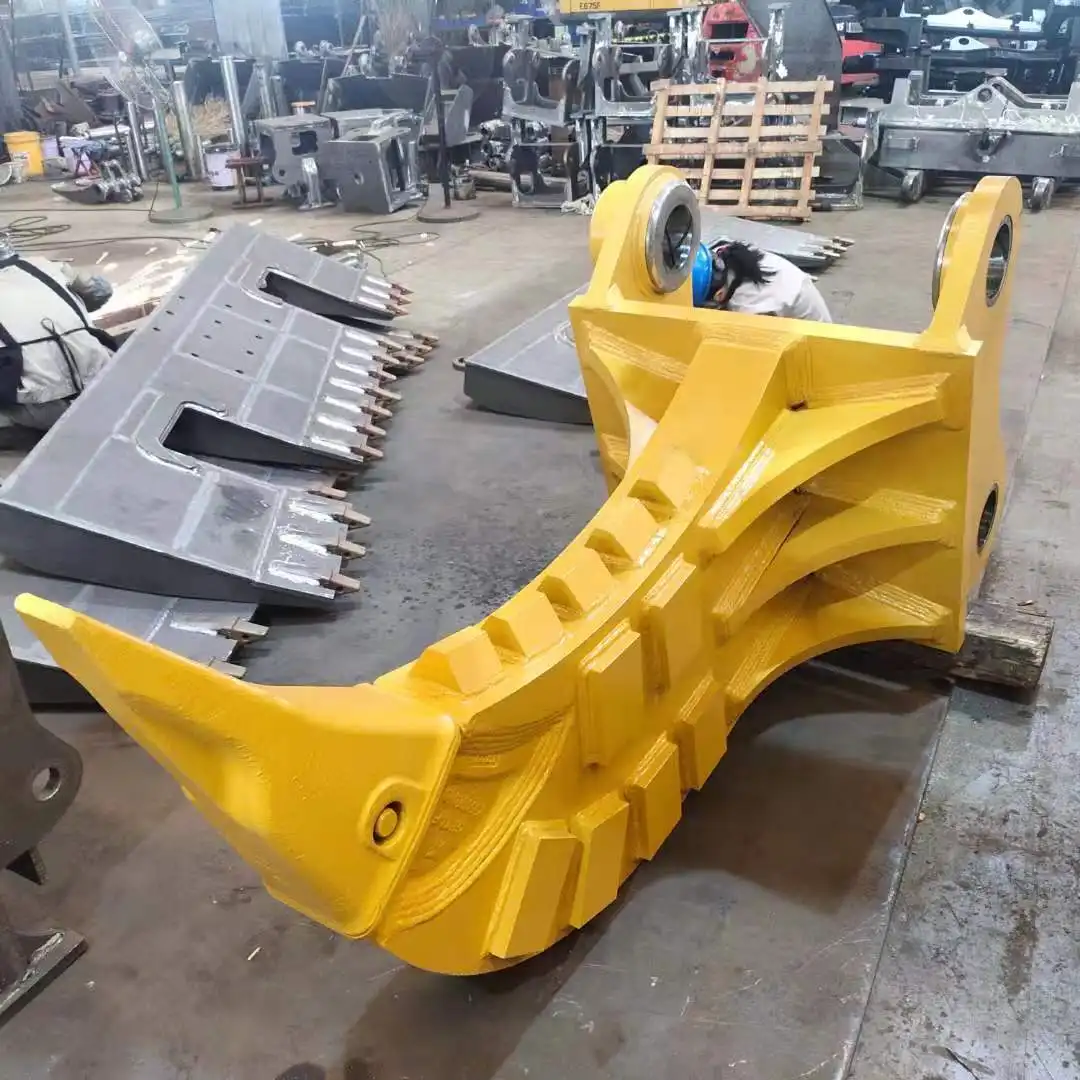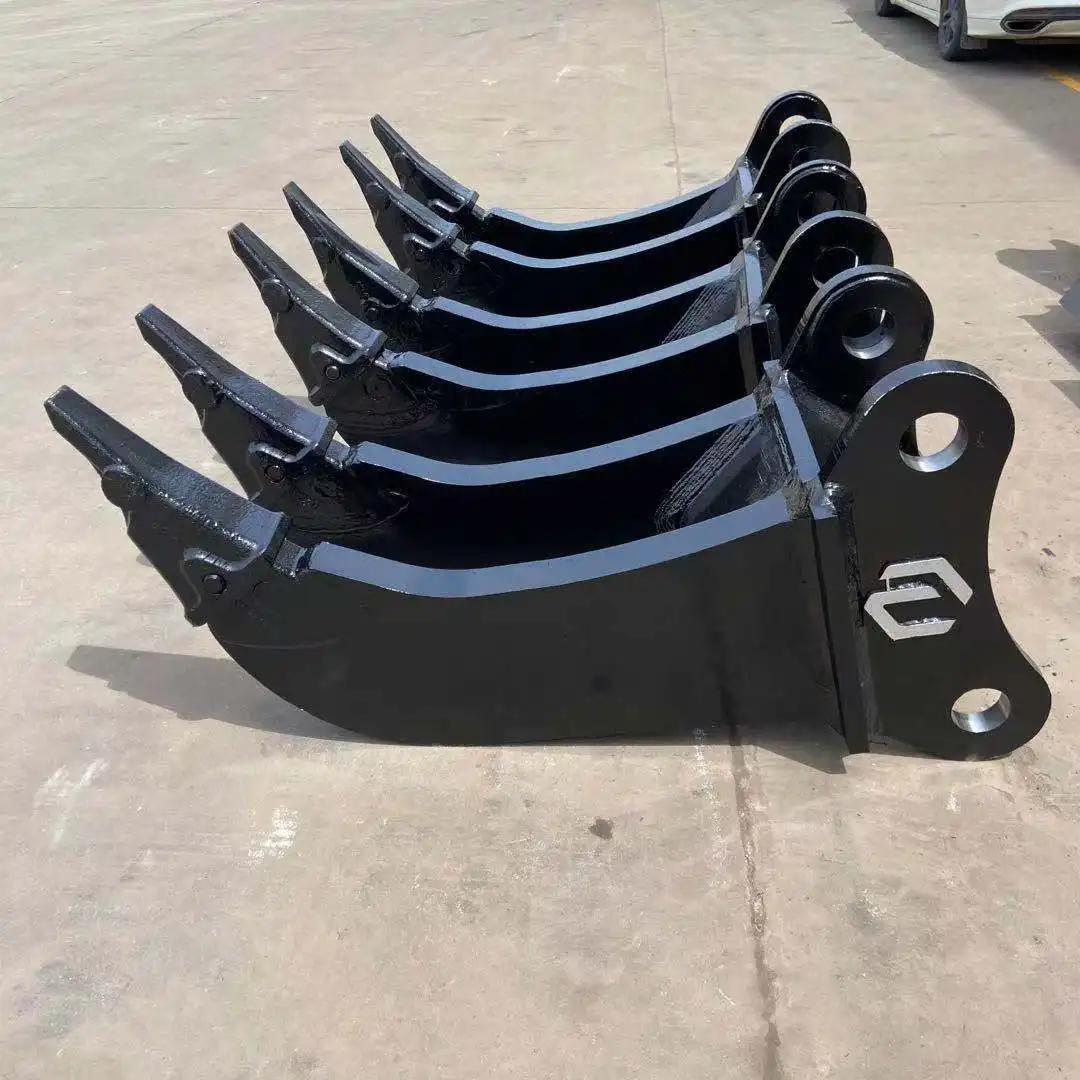What materials are used to make excavator root rippers?
Modern excavation projects demand attachments that can withstand tremendous stress while maintaining precision and reliability throughout extended operations. The materials used in manufacturing excavator root rippers represent a sophisticated blend of metallurgy, engineering expertise, and practical field requirements that have evolved significantly over the past decade.
Understanding the material composition of these critical attachments helps operators make informed decisions about equipment selection, maintenance schedules, and operational expectations. The choice of materials directly impacts performance characteristics, durability, cost-effectiveness, and overall project success across diverse applications ranging from forestry operations to urban demolition projects.
Contemporary excavator gripper technology incorporates three primary material categories, each engineered to address specific performance requirements and operational challenges. These materials work synergistically to create attachments that balance strength, flexibility, and longevity while maintaining the precision control that modern excavation projects require.

High-Strength Low-Alloy (HSLA) Steel
High-Strength Low-Alloy steel serves as the foundational material for excavator root ripper construction, offering an exceptional balance of mechanical properties that makes it ideally suited for demanding excavation applications. This advanced steel formulation incorporates carefully controlled amounts of alloying elements that enhance strength without compromising weldability or formability.
Metallurgical Properties and Composition
HSLA steel typically contains small percentages of elements such as niobium, vanadium, and titanium, which form microscopic precipitates that significantly strengthen the material's crystal structure. These alloying additions allow manufacturers to achieve yield strengths exceeding 350 MPa while maintaining excellent toughness characteristics essential for impact resistance.
The controlled carbon content, usually maintained below 0.23%, ensures optimal weldability during manufacturing processes. This characteristic proves crucial when fabricating complex attachment geometries that require multiple welded joints and reinforcement structures. The material's fine-grain structure contributes to superior fatigue resistance, extending operational life under cyclic loading conditions.
Structural Design Advantages
The enhanced strength-to-weight ratio of HSLA steel allows engineers to create more efficient structural designs without compromising performance. Thinner sections can carry equivalent loads compared to conventional mild steel, reducing overall attachment weight and improving excavator fuel efficiency during operation.
Advanced forming techniques take advantage of HSLA steel's excellent cold-forming properties, enabling manufacturers to create complex curved sections that optimize stress distribution. These design capabilities result in attachments that channel operational forces more effectively, reducing stress concentrations that could lead to premature failure.
Manufacturing and Processing Benefits
HSLA steel's superior weldability allows manufacturers to employ various joining techniques without compromising material properties. The reduced preheating requirements and lower susceptibility to heat-affected zone embrittlement streamline production processes while maintaining consistent quality standards.
The material's excellent machinability facilitates precise manufacturing of mounting interfaces, hydraulic connections, and adjustment mechanisms. This characteristic proves particularly valuable when creating attachments that must interface perfectly with diverse excavator models and hydraulic systems.
Heat treatment processes can further enhance HSLA steel properties for the excavator gripper. Controlled cooling rates and tempering procedures allow manufacturers to optimize hardness, toughness, and residual stress patterns to match particular operational requirements.

Wear-Resistant Steel Plates
Wear-resistant steel plates represent a critical component in excavator gripper construction, specifically engineered to withstand the harsh abrasive conditions encountered during excavation operations. These specialized materials protect underlying structural components while maintaining smooth operational surfaces that minimize energy consumption and maximize productivity.
Hardness Classifications and Applications
Modern wear-resistant plates are available in multiple hardness classifications, typically ranging from 400 to 600 HBW (Brinell Hardness). The selection depends on specific operational requirements, with higher hardness levels providing superior abrasion resistance but potentially reduced impact toughness.
The microstructure of these plates features martensitic or bainitic phases that provide exceptional resistance to scratching and gouging. Advanced manufacturing techniques create uniform hardness distribution throughout the plate thickness, ensuring consistent performance characteristics across the entire wear surface.
Specialized surface treatments, including plasma hardening and laser treatment, can further enhance wear resistance in critical contact areas. These processes create extremely hard surface layers while maintaining tough core properties that prevent catastrophic failure under severe impact conditions.
Strategic Placement and Design Integration
Engineers strategically position wear-resistant plates in high-contact areas where material degradation occurs most rapidly. Common locations include the leading edges of ripper shanks, soil contact surfaces, and areas subjected to sliding friction during operational cycles.
The excavator gripper design must accommodate thermal expansion differences between wear plates and underlying structural materials. Proper joint design and fastening techniques prevent stress concentrations that could compromise the integrity of both protective and structural components.
Replaceable wear plate systems allow operators to maintain optimal performance throughout the attachment's service life. These designs incorporate standardized mounting interfaces that facilitate field replacement without requiring specialized tools or extensive disassembly procedures.
Manufacturing Processes and Quality Control
The production of wear-resistant plates involves controlled cooling processes that achieve desired microstructures without introducing harmful residual stresses. Water quenching followed by precise tempering cycles creates the optimal balance of hardness and toughness required for excavation applications.
Quality control procedures include comprehensive hardness testing, impact resistance evaluation, and dimensional verification to ensure consistent performance characteristics. Non-destructive testing methods detect internal defects that could compromise operational reliability.
Advanced manufacturing facilities employ automated systems that maintain precise temperature control throughout heat treatment processes. These systems ensure repeatable results and minimize variations that could affect field performance or service life expectations.

Hardened Alloy Steel for Teeth/Tips
The cutting teeth and tips of excavator root rippers represent the most demanding application of materials technology in attachment design. These components must maintain sharp cutting edges while withstanding tremendous impact forces, abrasive wear, and the corrosive effects of soil chemistry. The selection of appropriate hardened alloy steels proves critical for maintaining operational efficiency and minimizing replacement costs.
Alloy Composition and Heat Treatment
Premium tooth materials typically incorporate chromium, molybdenum, and vanadium in carefully controlled proportions to achieve optimal hardness and toughness combinations. These alloying elements form stable carbides that resist wear while maintaining sufficient matrix toughness to prevent brittle failure.
The heat treatment process involves austenitizing at temperatures exceeding 850°C, followed by controlled quenching to achieve martensitic transformation. Subsequent tempering at moderate temperatures optimizes the hardness-toughness balance for specific soil conditions and operational requirements.
Advanced heat treatment techniques, including differential hardening, create teeth with extremely hard cutting edges and progressively softer core regions. This gradient structure maximizes cutting efficiency while providing the toughness necessary to absorb impact energy without fracturing.
Geometric Design and Performance Optimization
Tooth geometry significantly influences material performance and operational effectiveness. Acute angles maximize penetration capability but concentrate stress, while broader angles distribute loads more effectively but may reduce cutting efficiency. The optimal design balances these competing requirements based on expected soil conditions.
Surface treatments such as nitriding or carbonitriding create extremely hard surface layers that enhance wear resistance without compromising core toughness. These treatments typically increase surface hardness to 60-65 HRC while maintaining core hardness levels around 45-50 HRC.
Self-sharpening designs incorporate specific angle relationships that maintain cutting efficiency throughout the wear process. As material wears away, the tooth profile naturally maintains optimal cutting geometry, extending service life and reducing maintenance requirements.
Attachment and Replacement Systems
The excavator gripper with hardened teeth to the ripper structure requires careful consideration of thermal expansion differences and stress concentration factors. Mechanical fastening systems must distribute loads effectively while allowing for thermal movement during operational cycles.
Welded attachment methods require specialized procedures to prevent heat-affected zone softening that could compromise tooth performance. Preheating and controlled cooling processes maintain material properties while ensuring reliable joint integrity.
Replaceable tooth systems enable operators to maintain optimal cutting performance throughout the attachment's service life. Standardized mounting interfaces facilitate field replacement while ensuring proper alignment and secure attachment under operational loads.
FAQ
①What determines the choice of materials for different excavator root ripper components?
Material selection depends on specific functional requirements, expected loads, environmental conditions, and cost considerations. Structural components require high strength and weldability, while wear surfaces need abrasion resistance, and cutting edges demand hardness with impact toughness.
②How does material quality affect the performance of an excavator gripper?
Superior materials directly translate to improved durability, reduced maintenance requirements, and enhanced operational efficiency. High-quality materials maintain performance characteristics longer, reducing replacement costs and operational downtime.
③Can different steel grades be mixed in a single ripper attachment?
Yes, modern attachments typically combine multiple steel grades optimized for specific functions. Structural components use HSLA steel, wear surfaces employ hardened plates, and cutting edges utilize specialized alloy steels, all working together for optimal performance.
④What maintenance practices help preserve material properties?
Regular inspection for wear patterns, proper lubrication of moving components, prompt replacement of worn parts, and protection from corrosive environments all contribute to maintaining material performance. Avoiding overloading and operating within design parameters also extends material life.
⑤How do environmental conditions affect material selection?
Corrosive soils may require stainless steel components or protective coatings, while extremely abrasive conditions demand higher hardness materials. Temperature extremes can affect material properties, influencing the choice of alloy compositions and heat treatment procedures.
Experience Superior Materials Technology with Tiannuo
Tiannuo's excavator gripper attachments showcase advanced materials engineering through our high-strength steel clamp bodies that deliver exceptional durability under demanding conditions. Our adjustable clamp teeth utilize premium alloy steels optimized for various excavation tasks, while precision-engineered oil cylinders provide reliable hydraulic power through optimized pressure oil systems.
Our comprehensive pipeline connections ensure secure hydraulic integration with your excavator's control systems, enabling smooth operation across diverse applications including excavation, demolition, ore extraction, and slope cleaning projects. Regular maintenance protocols preserve material properties and ensure consistent performance throughout extended service life.
The superior materials and engineering expertise behind every Tiannuo attachment reflect our commitment to delivering equipment that meets the demanding requirements of modern excavation professionals. Our focus on material quality and manufacturing precision ensures reliable performance in the most challenging operational environments.
Ready to experience the difference that superior materials technology can make in your excavation operations? Contact our materials engineering specialists to discuss your specific requirements and discover how Tiannuo's advanced material solutions can enhance your operational efficiency and reduce total cost of ownership.
Connect with our technical team at tn@stnd-machinery.com to explore how our materials expertise can address your unique operational challenges and requirements.
References
- Materials Engineering Quarterly: "Advanced Steel Alloys in Heavy Equipment Manufacturing" (2024)
- Construction Materials Journal: "Wear-Resistant Steel Applications in Excavation Equipment" (2023)
- Metallurgical Engineering Review: "Heat Treatment Optimization for Excavator Attachment Materials" (2024)
- Heavy Equipment Materials Science: "HSLA Steel Properties and Applications in Construction Machinery" (2023)
- Industrial Materials Technology: "Hardened Alloy Steel Design for Cutting Tool Applications" (2024)
About Author: Arm
Arm is a leading expert in the field of specialized construction and railway maintenance equipment, working at Tiannuo Company. Tiannuo specializes in manufacturing a wide range of products, including railway maintenance equipment like railway sleeper changing machines and screening machines, excavator modification equipment such as excavator lifting cabs, various engineering arms for excavators, excavator accessories like digging buckets, and engineering vehicle auxiliary equipment like loader buckets.

